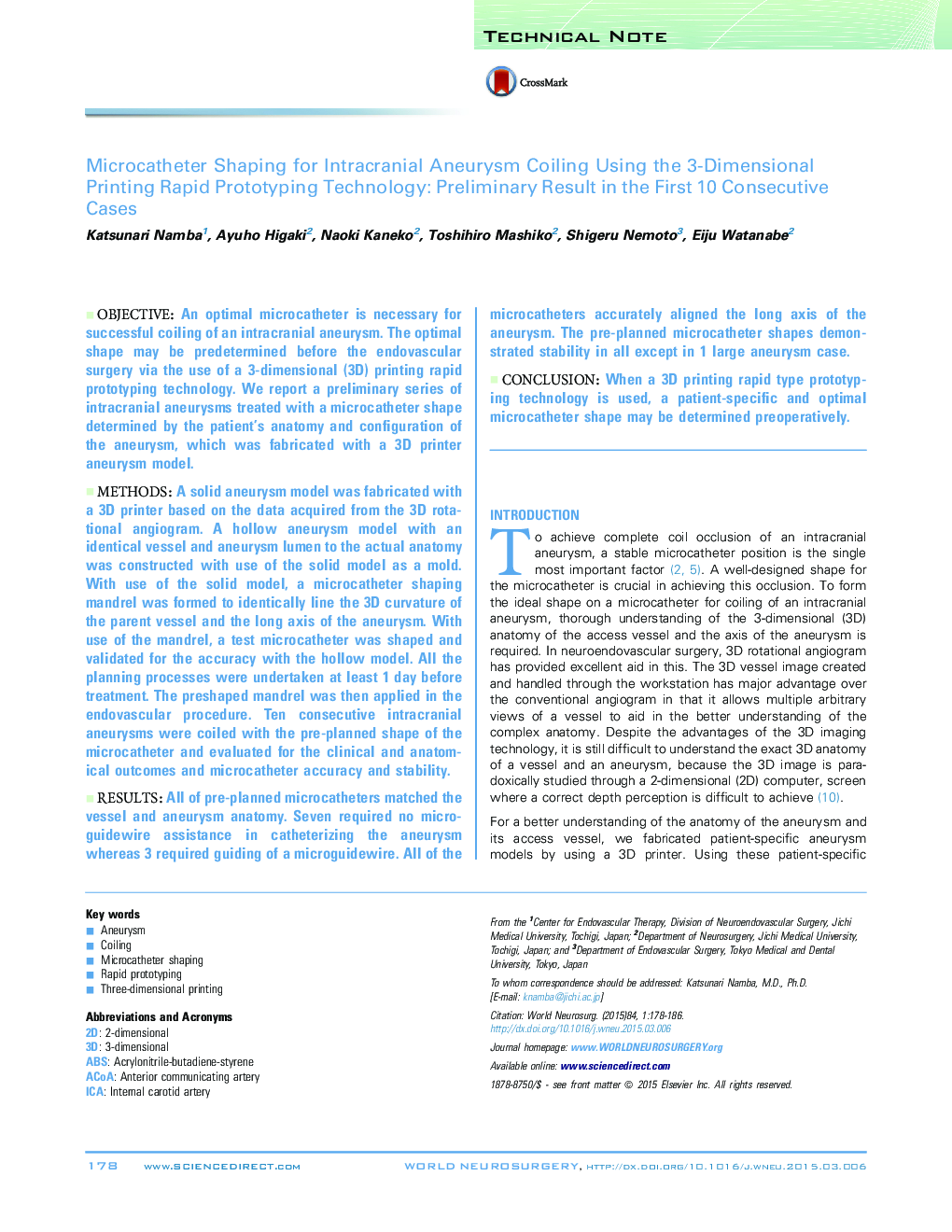| کد مقاله | کد نشریه | سال انتشار | مقاله انگلیسی | نسخه تمام متن |
|---|---|---|---|---|
| 3095078 | 1190901 | 2015 | 9 صفحه PDF | دانلود رایگان |

ObjectiveAn optimal microcatheter is necessary for successful coiling of an intracranial aneurysm. The optimal shape may be predetermined before the endovascular surgery via the use of a 3-dimensional (3D) printing rapid prototyping technology. We report a preliminary series of intracranial aneurysms treated with a microcatheter shape determined by the patient's anatomy and configuration of the aneurysm, which was fabricated with a 3D printer aneurysm model.MethodsA solid aneurysm model was fabricated with a 3D printer based on the data acquired from the 3D rotational angiogram. A hollow aneurysm model with an identical vessel and aneurysm lumen to the actual anatomy was constructed with use of the solid model as a mold. With use of the solid model, a microcatheter shaping mandrel was formed to identically line the 3D curvature of the parent vessel and the long axis of the aneurysm. With use of the mandrel, a test microcatheter was shaped and validated for the accuracy with the hollow model. All the planning processes were undertaken at least 1 day before treatment. The preshaped mandrel was then applied in the endovascular procedure. Ten consecutive intracranial aneurysms were coiled with the pre-planned shape of the microcatheter and evaluated for the clinical and anatomical outcomes and microcatheter accuracy and stability.ResultsAll of pre-planned microcatheters matched the vessel and aneurysm anatomy. Seven required no microguidewire assistance in catheterizing the aneurysm whereas 3 required guiding of a microguidewire. All of the microcatheters accurately aligned the long axis of the aneurysm. The pre-planned microcatheter shapes demonstrated stability in all except in 1 large aneurysm case.ConclusionWhen a 3D printing rapid type prototyping technology is used, a patient-specific and optimal microcatheter shape may be determined preoperatively.
Journal: World Neurosurgery - Volume 84, Issue 1, July 2015, Pages 178–186